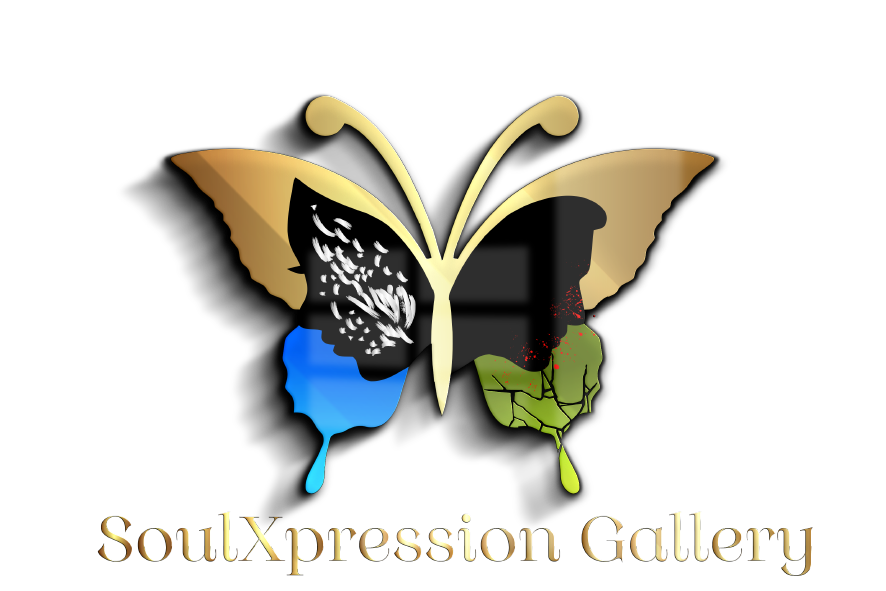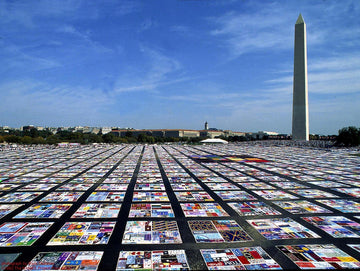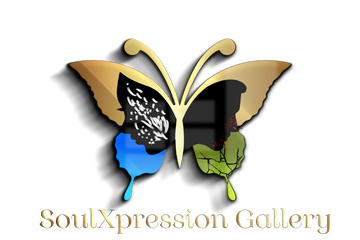Art has long been a powerful tool for activism, serving as a medium to address societal issues, challenge the status quo, and inspire change. From murals and street art to performance and digital media, artists around the world use their creativity to highlight injustices, advocate for marginalized communities, and provoke critical conversations. This article explores the intersection of art and activism, examining how artists address societal issues through their work and the impact of their efforts on society.
The Ancient Soul of Art: Purpose and Place in Traditional Societies
In ancient civilizations across the globe, art was rarely viewed as a separate, autonomous realm of human activity. Instead, it was deeply woven into the social, religious, and political fabric of daily life. Art served multiple interconnected purposes that extended far beyond aesthetic pleasure or individual expression.
- In Ancient Egypt, artistic production was predominantly a sacred act connected to religious belief and the preservation of cosmic order. Artists were considered skilled craftspeople whose work maintained ma'at (harmony and balance) and ensured immortality for the deceased. Their artistic creations were not viewed as personal expressions but as essential elements in the religious and funerary practices that sustained Egyptian society.
- Similarly, in Classical Greece, art fulfilled crucial civic and religious functions. Sculptures adorned temples as offerings to deities, while public monuments celebrated military victories and civic virtues. Greek drama emerged from religious festivals honoring Dionysus but evolved to examine pressing social and ethical questions. The theater provided a space where citizens could collectively contemplate complex issues of justice, duty, and governance.
- In ancient China, painting, calligraphy, and poetry were considered essential elements of moral cultivation for the educated elite. The artist-scholar used artistic practice as a means to embody and express virtues valued in Confucian thought. Art was inseparable from ethics and governance—a refined scholar's painting reflected his moral character and, by extension, his fitness for public service.
-
In Rome, art focussed on realism, portraiture and propagandistic depictions of military conquests and imperial power. Art served to glorify the state, inspire citizens and document the achievements of its rulers.
Other cultures worldwide employed art as a vehicle for cultural transmission and spiritual connection. From Australian Aboriginal painting to North American Plains Indians' winter counts, artistic expressions recorded histories, conveyed traditional knowledge, and maintained connections to ancestral wisdom and spiritual realms.
Across these diverse contexts, several common patterns emerge:
- Art was primarily functional rather than purely aesthetic
- Artistic production was tied to community needs rather than individual expression
- Artists were often seen as skilled artisans or ritual specialists rather than creative geniuses
- Art served to reinforce social cohesion and shared values
- Artistic forms were typically governed by tradition and convention rather than innovation
The Modern Transformation: Art in Contemporary Society
The modern Western conception of art emerged gradually through historical developments including the Renaissance, Enlightenment, and Industrial Revolution. Several key shifts fundamentally transformed art's social role:
- The rise of art markets separated art from religious and civic functions, transforming it into a commodity for private consumption and investment. Museums and galleries emerged as specialized spaces dedicated exclusively to aesthetic contemplation, further removing art from everyday contexts.
- Romanticism elevated the artist to the status of creative genius and visionary outsider, emphasizing originality and personal expression over traditional skill and communal purpose. The concept of "art for art's sake" gained prominence, asserting that true art need serve no social, political, or moral function.
These developments created an increasingly specialized art world with its own institutions, discourse, and market mechanisms—often disconnected from broader social concerns. Yet simultaneously, new possibilities emerged for art as a form of social critique and political intervention.
The Rise of Contemporary Activism
Activism, as we understand it today, refers to direct, intentional efforts to bring about social, political, economic, or environmental change, typically through organized collective action. While dissent and resistance have existed throughout human history, modern activism emerged alongside democratic governance systems that theoretically allow for citizen participation.
Modern activists operate across a spectrum of causes, including:
Climate Justice
- Greta Thunberg (Sweden) leading global youth climate strikes
- Luisa Neubauer (Germany) organizing Fridays for Future demonstrations
- Vanessa Nakate (Uganda) highlighting climate impacts on African communities
Racial Equality
- Patrisse Cullors, Alicia Garza, and Opal Tometi founding the Black Lives Matter movement
- Ibram X. Kendi advocating for antiracist policy reforms
- Rachel Cargle focusing on intersections of race and womanhood
Gender Equality
- Tarana Burke initiating the #MeToo movement
- Malala Yousafzai championing girls' education globally
Guerrilla Girls: The Guerrilla Girls are an anonymous group of feminist artists who use provocative posters, performances, and public appearances to highlight gender and racial inequalities in the art world. Since their formation in 1985, the Guerrilla Girls have challenged the underrepresentation of women and artists of color in galleries and museums, using humor and satire to expose systemic biases.
The AIDS Memorial Quilt: The AIDS Memorial Quilt is one of the most powerful examples of art as activism. Initiated in 1987, the quilt is a massive, collaborative art project that commemorates the lives of those who have died of AIDS. Each panel of the quilt is created by friends, family members, and loved ones of the deceased, serving as a poignant reminder of the human impact of the AIDS epidemic. The quilt has been displayed around the world, raising awareness and funds for AIDS research and advocacy.
JR's "Inside Out" Project: French artist JR's "Inside Out" project is a global participatory art initiative that allows people to share their stories and make a statement by displaying large-scale black-and-white portraits in public spaces. The project has addressed various social issues, including immigration, racial inequality, and climate change, by giving a face to the individuals affected by these issues and creating a sense of solidarity and collective action.
These activists respond to persistent inequalities, environmental crises, democratic erosion, and human rights violations. While their specific concerns vary, they share a common belief that coordinated action can create meaningful change within existing systems or, in some cases, transform those systems entirely.
The Intersection: Art as Activism
The relationship between art and activism has deep historical roots but has gained particular prominence in recent decades. "Artivism" merges aesthetic practice with political engagement, leveraging art's unique capacities to communicate across barriers, evoke emotional responses, and imagine alternative futures.
Art serves activism through multiple approaches:
- Visibility and Awareness
Art can bring marginalized issues into public consciousness through powerful visual language. Chinese artist Ai Weiwei's installation "Straight" (2008-2012) presented 90 tons of straightened steel rebar recovered from schools that collapsed during the 2008 Sichuan earthquake, making visible government corruption and negligence that contributed to the deaths of thousands of schoolchildren.
Similarly, the AIDS Memorial Quilt, initiated in 1985, used the familiar, intimate form of quilting to visualize the devastating scale of the AIDS epidemic at a time when many victims remained unnamed and uncounted in public discourse.
 In-Sanity From The Series "Peace In Chaos" By Joseph Egheosa Ifada
In-Sanity From The Series "Peace In Chaos" By Joseph Egheosa Ifada
- Challenging Narratives and Reframing Issues
Artists can disrupt dominant narratives and offer alternative frameworks for understanding complex issues. Nigerian photographer Aisha Muhammed-Oyebode's series "Reclamation" documents survivors of Boko Haram kidnappings not as passive victims but as resilient individuals rebuilding their lives, challenging simplistic media portrayals.
The Yes Men, an activist duo, use sophisticated parodies and media interventions to expose corporate malfeasance. Their fake websites and impersonations of corporate representatives momentarily disrupt the carefully managed public image of powerful institutions, creating space for critical questioning.
- Building Community and Solidarity
Participatory art practices can strengthen bonds within activist movements and create meaningful connections between diverse groups. Detroit's Heidelberg Project, initiated by artist Tyree Guyton in 1986, transformed vacant houses in his declining neighborhood into large-scale art installations, converting symbols of urban decay into community gathering spaces and catalysts for dialogue.
In Germany, the Center for Political Beauty (Zentrum für Politische Schönheit) creates provocative interventions around migration and human rights. Their 2019 project "Searching for Victims of the NSU" used public commemorative actions to build solidarity between different communities affected by right-wing violence.
Chords Of Connection From The Series "Ensemble" By Omonu Salisu
- Envisioning Alternatives
Perhaps art's most powerful contribution to activism is its capacity to imagine new possibilities beyond current realities. Speculative design, utopian fiction, and prefigurative architecture can visualize post-carbon economies, non-carceral approaches to justice, or regenerative relationships with ecosystems.
The Zapatista movement in Mexico exemplifies this approach, creating murals, poetry, and communiqués that articulate indigenous autonomy not just as political demand but as lived reality. Their art doesn't simply protest existing conditions but actively constructs alternative social relations.
Contemporary Challenges and Possibilities
Despite these powerful examples, the relationship between art and activism faces significant tensions in the contemporary landscape:
- Institutional Absorption: Art institutions increasingly welcome politically engaged art, potentially neutralizing its disruptive force by containing it within the very systems it critiques. Artists must navigate whether working within or outside established institutions best serves their activist goals.
- Market Commodification: Political art can become valuable cultural capital, raising questions about who profits from representations of suffering and resistance. When protest aesthetics appear in luxury fashion or corporate advertising, activism risks becoming a marketable style rather than substantive challenge.
- Digital Transformation: Social media has created unprecedented opportunities for activist art to circulate globally, but also encourages simplified messaging and visual spectacle that may reduce complex issues to shareable content.
- Measuring Impact: Activist art faces persistent questions about effectiveness. Does aesthetic intervention translate to concrete policy change? Can symbolic action address material conditions? Artists and movements continue developing frameworks to assess their impact beyond immediate visibility.
Conclusion: Toward Engaged Creativity
The ancient understanding of art as socially embedded practice offers valuable wisdom for contemporary activist art. Rather than seeing political engagement as a constraint on artistic freedom, we might recognize that connecting art to collective purpose can deepen its resonance and meaning.
Conversely, activism benefits from art's unique capacities—its ability to work through ambiguity, speak to emotions, create symbolic resources, and sustain movements through difficult periods. At its best, the marriage of art and activism creates spaces where critique and imagination, resistance and creation, individual expression and collective action can coexist.
As society faces intensifying challenges from climate change, democratic erosion, technological disruption, and persistent inequalities, this creative intersection becomes increasingly vital. Art-activism reminds us that transformation requires not just policy solutions but cultural change—new stories, symbols, and visions that help us imagine and enact more just and sustainable futures.
The artists-activists working in this tradition carry forward ancient wisdom about art's social purpose while responding to distinctly modern crises. Their work demonstrates that beauty and justice, creativity and solidarity, cultural expression and political engagement need not be opposed. Instead, they can reinforce each other, generating more profound impacts than either might achieve alone.
Our Source
Art as Activism: How Protest Art Challenges the Status Quo. (2024, 30. August). MyArtBroker. https://www.myartbroker.com/collecting/articles/art-as-activism
Britannica money. (2025, 19. März). https://www.britannica.com/money/art-market
Masterworks. (2022, 15. November). History of the First Modern Art Market. Masterworks. https://insights.masterworks.com/art/history/history-of-the-first-modern-art-market/
Niță, S. (2024, 19. Dezember). Ancient Greek art. explore the art movement that emerged in Greece. https://www.ilustromania.com/artistic-movements/ancient-greek-art
Olga, G. (2024, 11. Juni). How the Romantic Era Influences Our Vision of Art Today - Olga Guarch. Olga Guarch. https://www.guarcholga.es/how-the-romantic-era-influences-our-vision-of-art-today/
Roman Art and Architecture. (o. D.). Oxford Art Online. https://www.oxfordartonline.com/page/roman-art-and-architecture
Silbergeld, Jerome, Sullivan & Michael. (2009, 30. Juli). Chinese art | History, Styles & Techniques. Encyclopedia Britannica. https://www.britannica.com/art/Chinese-art
Team, E. (2024, 1. Februar). Ancient Egyptian Art. Egypt Tours Portal. https://www.egypttoursportal.com/en-au/blog/egyptian-civilization/ancient-egyptian-art/
The Perception of Art in Ancient Greece and Its Impact on Contemporary Art - Eden Gallery. (o. D.). EDEN Gallery. https://www.eden-gallery.com/news/the-perception-of-art-in-ancient-greece-and-its-impact-on-contemporary-art






